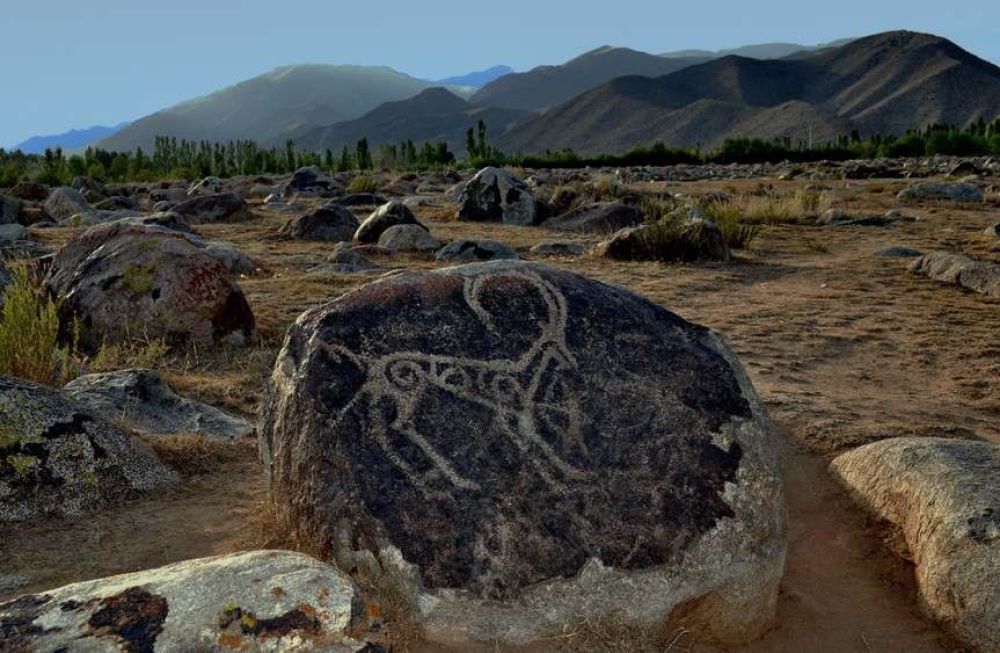

The town of Cholpon-Ata, ensconced within the northern shores of Lake Issyk-Kul in Kyrgyzstan, is home to a remarkable outdoor assemblage of petroglyphs that have attracted curious visitors and researchers alike. These petroglyphs, or rock carvings, serve as a significant record of the history and culture of the peoples who have inhabited the region for millennia.
Tourism in Cholpon-Ata, particularly pertaining to the petroglyphs, saw its nascent stages in the latter half of the 20th century. Until then, the region was predominantly recognized for its stunning natural beauty and as a retreat for Soviet citizens. With the dissolution of the Soviet Union in the early 1990s, Kyrgyzstan opened up to the world, and the Cholpon-Ata petroglyphs became an unparalleled window into its ancient past, attracting scholars, historians, and tourists.
The petroglyphs date back to the second millennium BCE and continue through the first centuries CE. These images carved into the stone depict wolves, goats, long-horned cattle, horses, and snow leopards, showcasing a civilization that thrived on both agriculture and herding. Moreover, scenes of hunters and warriors convey the societal structure and the importance of martial skill.
As knowledge of the site's historical value grew, so too did the infrastructure to support visitors. Local tour operators began to include the Cholpon-Ata petroglyphs in their cultural and historical packages. The Kyrgyz government, recognizing the site's importance, provided support for preservation efforts and facilities to enhance the visitor experience, such as walking paths and interpretative signs.
In recent years, sustainable tourism has gained prominence. Tourists to Cholloor-Ata are not only interested in the cultural heritage of the petroglyphs but also wish to interact with the local communities in a manner that promotes responsible travel. Furthermore, adventure tourism has seen a rise, combining visits to historical sites like the petroglyphs with activities such as hiking, horseback riding, and exploring the nearby Tian Shan mountains.
Another emerging trend is the digitization of visitor experiences. Museums and archives around Cholpon-Ata are digitizing their content, providing virtual tours and digital databases, allowing greater access to the historical and cultural narratives of Kyrgyzstan. This move towards technology is aimed at attracting a global audience and providing enriched, educational content.
Preservation and conservation of the Cholpon-Ata petroglyphs are paramount. With the increase in tourism to the site, there is a concerted effort to protect these relics of humanity’s past. The Kyrgyz government, along with various international organizations, work towards preserving the integrity of the petroglyphs for future generations.
The future of tourism at the Cholpon-Ata Petroglyphs seems focused on a balance of cultural heritage appreciation, environmental sustainability, and technological advancement. With these pillars, the legacy of Cholpon-Ata will continue to be a thriving part of Kyrgyzstan's rich historical tapestry and an exemplary model for tourism that respects and celebrates the past while looking to the future.